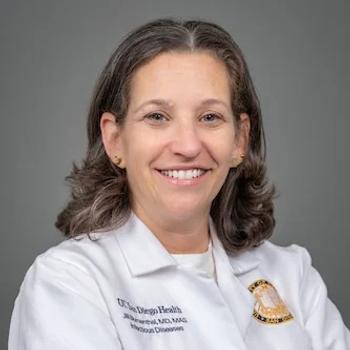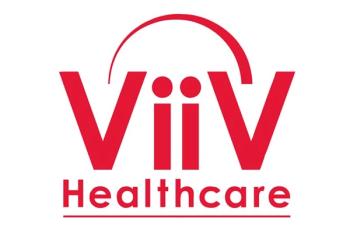ActivePure Medical has announced study results demonstrating that its Induct Guardian Series air decontamination system can achieve a 96-99% reduction in methicillin-resistant Staphylococcus aureus (MRSA) and a 70% decrease in total healthcare-associated infections (HAIs) across two hospitals. This innovative continuous air and surface decontamination technology provides automated, human-independent protection in healthcare settings.1
Deborah (Debbi) Birx, MD, chief medical and science advisor at ActivePure, working to combat HAIs and environmental pathogens in hospitals and healthcare systems. She explains the focus on MRSA and its impact. “MRSA accounts for about 11% of all hospital-acquired infections, MRSA is responsible for nearly 42% of deaths from these infections, making it incredibly important and deadly, especially for hospitalized patients who are already vulnerable due to trauma or surgical procedures.”
Understanding MRSA
This staph strain is MRSA, a strain of S aureus that is resistant to several antibiotics. This germ is commonly found on the skin or in the nose of about one in three people and it can cause more severe infections due to its resistance. Symptoms typically include red, swollen, and painful bumps on the skin, which may be warm to the touch, filled with pus, and accompanied by fever. Prevention involves keeping wounds covered, avoiding the sharing of personal items, frequent hand washing, and not picking at sores.2
“MRSA is a major concern because it is resistant to many antibiotics. While we've developed stronger antibiotics over time, this has led to complications, such as the destruction of beneficial bacteria in our microbiome,” Birx explains. “The gut microbiome is now understood to be critical for overall health, with imbalances potentially linked to conditions such as Alzheimer's disease, cardiovascular issues, and inflammation.”
3 Key Takeaways
- ActivePure Medical's Induct Guardian Series achieved a 96-99% reduction in MRSA and a 70% decrease in total HAIs across two hospitals
- The system's photohydrolysis technology provides continuous, automated disinfection of air and surfaces, effectively lowering contamination levels in healthcare settings.
- Birx highlighted that the study showed over a 90% reduction in bacterial and fungal loads, emphasizing the importance of using standard methodologies to validate the technology's efficacy.
If untreated, MRSA can lead to complications such as pneumonia, bloodstream infections, surgical site infections, sepsis, and potentially death. MRSA spreads through direct contact with infected people, wounds, or contaminated items. Diagnosis requires laboratory testing, and treatment may involve antibiotics or, in severe cases, surgery.2
Study Insights
The study evaluated the effects of advanced photohydrolysis continuous disinfection technology on environmental bioburden in hospitals. Findings reveal that this continuous disinfection significantly reduces contamination on surfaces, floors, and in the air, leading to fewer healthcare-associated infections. Surface testing at the hospitals showed more than a 98% reduction in mean colony-forming units (CFUs) of fungi and MRSA, with floor contamination decreasing by over 96% for both fungi and MRSA. Additionally, airborne fungal CFUs were reduced by up to 89%, while aerobic bacterial CFUs fell by up to 72%. The technology’s continuous operation, suitability for use in occupied rooms, and lack of reliance on human intervention make it a valuable solution for managing contamination in complex healthcare environments.3
Birx explains how MRSA and fungal CFUs were measured before and after using photohydrolysis technology, “We measured bacterial and fungal loads on these surfaces and in the air before installing the ActivePure system. This system, which operates continuously to produce hydroxyl radicals, was designed to circulate these radicals into the air and onto surfaces to destroy bacterial and fungal membranes. After installing the system, we re-measured the bacterial and fungal loads on the surfaces and in the air. We observed a reduction of over 90% in both bacteria and fungi, which was highly promising and exciting for us.”
The study involved sampling every four weeks for four months at two acute care intensive care units in Kentucky and Louisiana. CFUs of MRSA and fungi were measured on surfaces and floors, and fungi and aerobic bacteria were assessed in the air.3
“It's crucial to use standard methodologies, and we adhered to established techniques throughout the study,” Birx states. “We employed an independent group to analyze swabs taken from both surfaces and air samples, using a standard air collection technique widely used in hospital settings to detect microbes. Given that this is a new technology, employing classic detection and analysis methods helps validate its efficacy.”
Overall, Birx explainedActivePure's photohydrolysis technology effectively provides continuous disinfection of air and surfaces, aiding in the control of MRSA.
Stay tuned for Part 2 of our interview with Birx for further discussion on combating HAIs using this technology.
References
CDC. Methicillin-resistant Staphylococcus aureus (MRSA) Basics. Updated April 11, 2024. Accessed August 12, 2024. https://www.cdc.gov/mrsa/about/
The effects of a novel, continuous disinfectant technology on methicillin-resistant Staphylococcus aureus (MRSA), fungi, and aerobic bacteria in 2 separate intensive care units in 2 different states: An experimental design with observed impact on health care-associated infections (HAIs). American Journal of Infection Control. Published April 11, 2024. Accessed August 12, 2024. https://www.ajicjournal.org/article/S0196-6553(24)00155-X/fulltext







































































































































































































































































































